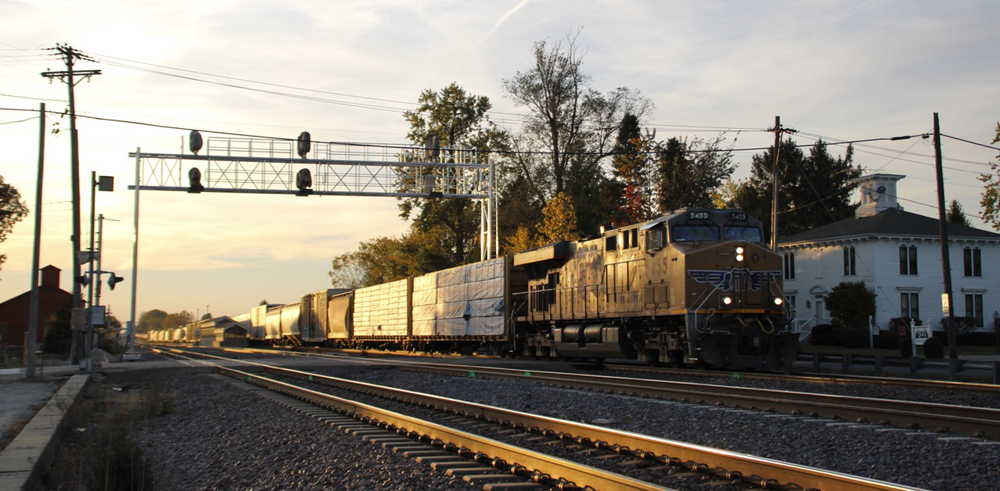
While the final margins may not be determined for some time in several outstanding races, the election results are coming into focus. Former President Donald Trump has been reelected, Republicans have won a majority in the U.S. Senate, and the U.S. House will be split fairly closely, as it has been for the past four years.
With the Senate shifting even just a few seats to the right, it alters what Congress might consider for rail safety legislation. It’s noteworthy that rail safety legislation pending in the U.S. Senate seems to have fallen short of the 60 votes necessary to proceed — but that doesn’t mean that the next two years will end the same way.
In fact, the next Congress has an excellent chance to make safety-enhancing moves on rail policy, starting with the successor to the 2021 Infrastructure Investment and Jobs Act (IIJA), which expires in 2026. The IIJA is just the most recent in the series of surface transportation packages that Congress authorizes every five or six years.
Congress does not always include a rail component to the surface transportation bill, so this is no slam dunk. However, there are several items Congress is likely to consider, starting as soon as January.
Grade-crossing safety. In the U.S., there are more than 200,000 grade crossings between roads and railroads. This is by far where the deadliest incidents involving trains occur.
The 2021 law included new funding to address grade crossings, although unfortunately the funding is only a small portion of what’s needed. What may be the best solution in most cases is also the most expensive, which is to create new vehicle overpasses. In other cases, closing the intersection may suffice. Congress is all but certain to continue putting additional funds into programs to address grade crossings.
New technology. Policymakers also seem likely to promote the development of new technology and performance-based regulations backed by sound data, and to allow for waivers and pilot programs on new safety approaches. Pilot programs – for the rollout of new techniques, processes, technology or other – can be focused either geographically or by segment to ensure the safest possible gathering of data to support new technology and new approaches.
Rural infrastructure. Congress in recent years has tried to step up its game with rural infrastructure, driven both by the needs of the freight network and the spreading population. Safety is a key consideration here, as accidents in rural areas, almost by definition, usually occur farther from potential medical assistance.
Permitting reform. The challenges to getting major infrastructure permitted have also ballooned over the past few decades, with years spent waiting and billions of dollars at stake attempting to move through the process. Fortunately, permitting reform has gotten a bit more bipartisan in recent years, as members of both major parties are finding difficulties in getting favored projects through.
Congress could expand the One Federal Decision framework, which was used during the Trump administration to get agencies to work together. This was pulled back by the Biden administration before being enacted as part of the IIJA. However, the version in IIJA is only a pale shadow of the concept, leaving work that could be picked up either by Congress or by the incoming administration. Or hopefully both.
Of course, the railroads themselves have internal initiatives on improving safety, and these should be studied and encouraged by Congress and the regulators. In some cases, rail carriers have higher standards than what’s legally required — these in particular should inform how policymakers think about ongoing issues.
The outcome of this year’s election cycle won’t resolve the tension surrounding the U.S. political divide. However, on rail policy, there are areas for policymakers to focus on that stakeholders should watch closely over the next year.
— Loren A. Smith Jr. is the president of Skyline Policy Risk Group. He formerly served as deputy assistant secretary for policy at the U.S. Department of Transportation. This article originally appeared at FreightWaves.com.














Sure didn’t take long for some to cry wolf.
Does project 2025 want to eliminate OSHA? If it does then expect the rail safety act to go nowhere. An extreme would be the elimination of required PTC.
ALAN —- Project 2025 wasn’t elected this week. Trump, Vance, a Republican Senate, and likely a Republican House were elected, not project 2025.
It’s a BIG LIE that Project 2025 is the Republican platform. I’d venture a guess that few of the Republicans elected last Tuesday have read even a single page of it. I’m a Republican voter. I haven’t read the stuff, or even a quick summary of it. I don’t know what’s in it and I don’t care.
The delusion is quite strong in this one Obi-Wan Kenobi
I voted for JD Vance as my Senator but….. has he educated himself on the rail industry since EP ? Him and Senator Brown co-sponsored a rail safety bill that was nothing more than a political knee jerk reaction. The cause of that derailment was not addressed at all.
JD Vance has said his experience with East Palestine has kept his eye on rail safety activities.